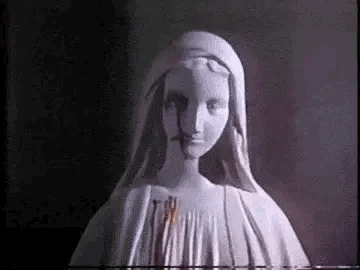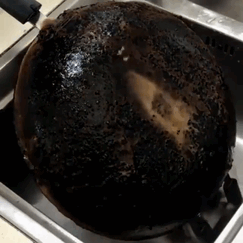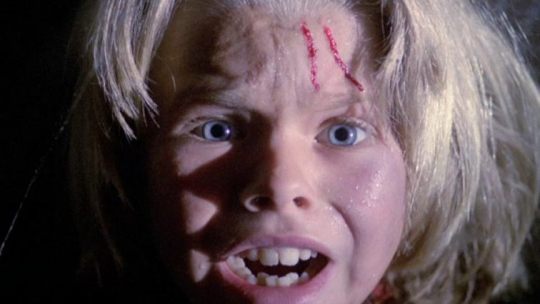#danny busting down a door with an axe like in the shining
Note
new AU....
Jason knows that if he tells his brothers, the teasing will not end, how could he be the only one who was cursed in the whole family?…
It has been weeks where from time to time he sees the appearance of a child, and he knows that the child is not normal, at first he thought he was a meta, but the protections reacted (yep, the magical protections he learned to do during a rebellious face where he I ran away to learn magic from JLD… Fuck you Bruce).
So, he has a ghost stalking him and trying to kidnap him, he hasn't slept well for weeks, but he thinks he finally hit on the right exorcism, the eleventh time is the charm…
_____OoO_____
Danny just wanted this guy to stop resisting, not only is he ectocontaminated, but he went through ectoplasmic sewage, he needs to get him to Frostbite for treatment urgently!!!
What Jason thinks is happening:

Whats Danny is actually trying to do:

#man i always wanted to do that#danny busting down a door with an axe like in the shining#but seriously#its bathtime#and of course takes that as the ghost wanting to drag him back to the Pit
298 notes
·
View notes
Text
SCUM IN THE AISLES #2 (House by the Cemetery)

Sometimes, in order to seek out the weirdest discarded slices of celluloid trash that cinema has to offer, one must leave the confines of their crappy apartment, and go to an actual movie theater. This is a column recounting my excursions into the b-movie wilds. This is Scum in the Aisles!
“Wow, you guys don’t look like Lucio Fulci fans at all.”
This is how programmer and film writer David Savage sarcastically sized up the nearly sold out crowd this past Tuesday night at the Drafthouse. It was Terror Tuesday, and the witching hour of 9:30pm was upon us. We had assembled on this evening to catch a 35mm screening of Fulci’s 1981 classic, House by the Cemetery. Our minds were steeled for the mind-bending, stylized gory supernatural chicanery we were about to witness, but we couldn’t help but laugh at Savage’s astute joke. Fulci’s films tend to attract, shall we say, a certain type: long hair, t-shirts emblazoned with either classic heavy metal or horror artwork, denim jackets or vests adorned with buttons and patches, skateboard sneakers. Needless to say, we fit the type, myself included.

Odds are, if you’re reading this website regularly, you already know who Lucio Fulci is. But just in case, here are the bare essentials: Fulci was an Italian filmmaker who spent the first decade of his career as an art critic before moving on to screenwriting and finally directing. His early efforts were mainly bawdy comedies and pulpy action thrillers, along with the occasional Spaghetti western. In 1969, he made his first giallo picture, A Lizard in a Woman’s Skin. Giallo, the subgenre kicked off by Mario Bava’s 1964 film Blood and Black Lace, combined elements of murder mysteries, slashers, and supernatural horror, presenting them with sumptuous visuals, swanky metropolitan settings, and a heaping helping of sex and gore. Fulci would make his name as a filmmaker with his work in this genre, beginning with his Italian breakthrough, 1972’s Don’t Torture a Duckling, and culminating in his international breakthrough, 1979’s Zombi 2. If you’ve ever seen the clip of an underwater zombie engaging in slow-mo fisticuffs with a shark, that was Fulci’s doing. The next year, Fulci set off to make his most ambitious work yet, the Gates of Hell Trilogy, which was comprised of 1980’s City of the Living Dead, 1981’s The Beyond, and today’s subject, 1981’s House by the Cemetery. Though they all have different plots and share no recurring characters, these films are united by the fact that they are the most probing look into Fulci’s obsessions: gothic horror, weird fiction, Grand Guignol violence, anti-Catholic sentiments, and the general malaise of knowing that life is governed by chaos, and evil wins the day much more often than good does.
Savage did an excellent job of setting up Fulci’s mindset as such before the film ran, and even though I had seen it multiple times before, this new appraisal allowed me to see the film with a whole new set of eyes. House by the Cemetery concerns a historian named Norman Boyle (Paolo Malco, who often played nebbish intellectual types in Fulci’s films) who moves from New York City to “Boston” (though the exterior house and town scenes were actually shot in upstate Massachusetts and Connecticut, while the interiors were filmed in Rome) alongside his wife Lucy (Katherine MacColl, another Fulci regular), and their young son, Bob (Giovanni Frezza), in order to finish a research project began by a colleague who went insane, killing his girlfriend and then himself. Jeez, the state of academics these days. The family resides in a spooky old Victorian mansion (you’ll never guess what’s nearby) that once belonged to a mad scientist named Doctor Freudstein (LULZ). Oh, and Bob keeps talking to the ghost of a little girl, Mae (Silvia Collatina), who warns him not to go to the house in the vaguest terms possible. Why are these omen spirits always so coy?

So from there we’re treated to the type of bloody otherworldly madness that Fulci fans know and love. We get the classic “stabbed in the back of the head so that the knife pokes through the mouth” trick, a mannequin decapitation, fireplace poker stabbings, various throat slittings, an amazing, super long sequence involving a bat that just refuses to die, and of course the climactic revelation that Doctor Freudstein (LULZ) is still alive, and using dead bodies strewn about the basement to prolong his life…somehow, despite the fact that he looks like a turkey drumstick stuffed into a Civil War uniform. That don’t much sound like living to me.
Fulci was never shy about borrowing from whatever mainstream film was popular at the time, and here we get plenty of influence from The Shining: a family relocating to a haunted location, a boy who communes with spirits, and an ending that involves good ol’ dad busting a door down with an axe. The main difference here is that we want little Danny Torrence to survive his ordeal at the Overlook Hotel, whereas Bob in this movie is an annoying little prick, and the audience laughed every time he spoke, because his voice is impossibly whiny. And while the main baddie (please don’t make me type his name again) is obviously an homage to a certain Mary Shelley classic, as Savage pointed out, the vibe of the film actually has much more in common with H.P. Lovecraft. Fulci was a diehard Lovecraft aficionado, and the film’s creepy New England setting, characters driven mad by unknown, unseen forces, and obsession with…re-animating…the dead (saaaaaay, there’s a boffo idea for a horror picture!) are all deeply Lovecraftian motifs.

Overall, House by the Cemetery is something of an outlier in the Gates of Hell trilogy. It is not as sprawling or otherworldly as City of the Living Dead or The Beyond, and it has a more somber, autumnal vibe to match its setting. Even the kills, while as bloody as anything else in Fulci’s cannon, somehow feel more restrained, at least when compared to the jaw-dropping set pieces in the previous two installments of the trilogy. Still, House by the Cemetery is an essential piece of the puzzle, a look back to a time when Fulci was at the height of his creative powers, and the only thing holding him back was the limits of his dark, twisted imagination. Kudos to the folks at the Drafthouse for seeing that his visions live on to this day.
youtube
#analogscum#scumintheaisles#alamodrafthouse#housebythecemetery#luciofulci#giallo#1981#slasher#horror#horrormovies#hauntedhouse#terrortuesday#35mm#katherinemaccoll#gore#hplovecraft
0 notes